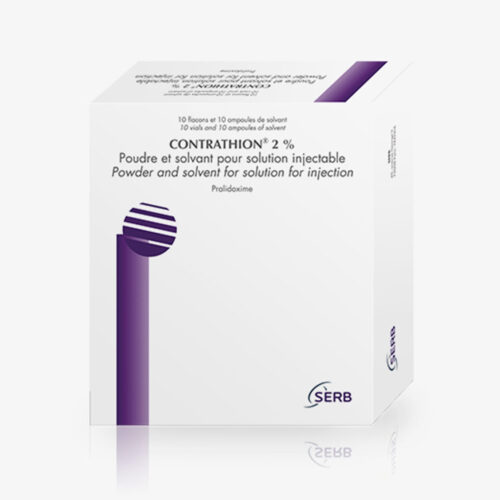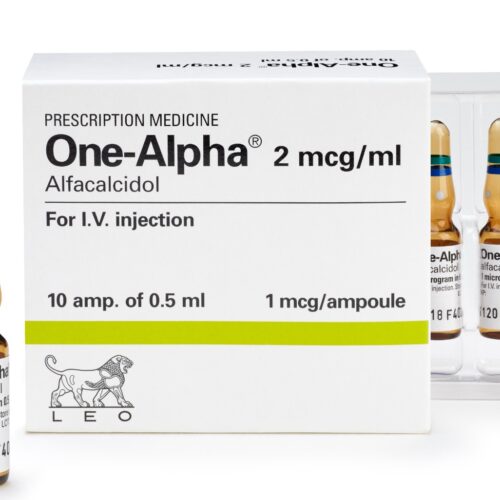Description
Description
Active ingredient: valganciclovir
Each film-coated tablet contains 496.3 mg of valganciclovir hydrochloride equivalent to 450 mg of valganciclovir (as free base).
VALCYTE is the brand innovator for valganciclovir – FDA approved.
Indications:
VALCYTE is indicated for the induction and maintenance treatment of cytomegalovirus (CMV) retinitis in adult patients with acquired immunodeficiency syndrome (AIDS).
VALCYTE is indicated for the prevention of CMV disease in CMV-negative adults and children (aged from birth to 18 years) who have received a solid organ transplant from a CMV-positive donor
Dosage and route of administration
Posology
Caution – Strict adherence to dosage recommendations is essential to avoid overdose .
Valganciclovir is rapidly and extensively metabolised to ganciclovir after oral dosing. Oral valganciclovir 900 mg b.i.d. is therapeutically equivalent to intravenous ganciclovir 5 mg/kg b.i.d.
Treatment of cytomegalovirus (CMV) retinitis
Adult patients
Induction treatment of CMV retinitis
For patients with active CMV retinitis, the recommended dose is 900 mg valganciclovir (two Valcyte 450 mg tablets) twice a day for 21 days and, whenever possible, taken with food. Prolonged induction treatment may increase the risk of bone marrow toxicity .
Maintenance treatment of CMV retinitis:
Following induction treatment, or in patients with inactive CMV retinitis, the recommended dose is 900mg valganciclovir (two Valcyte 450 mg tablets) once daily and, whenever possible, taken with food. Patients whose retinitis worsens may repeat induction treatment; however, consideration should be given to the possibility of viral drug resistance.
The duration of maintenance treatment should be determined on an individual basis.
Paediatric population
The safety and efficacy of Valcyte in the treatment of CMV retinitis have not been established in adequate and wellcontrolled clinical studies in paediatric patients.
Prevention of CMV disease in solid organ transplantation
Adult patients
For kidney transplant patients, the recommended dose is 900 mg (two Valcyte 450 mg tablets) once daily, starting within 10 days post-transplantation and continuing until 100 days post-transplantation. Prophylaxis may be continued until 200 days post-transplantation .
For patients who have received a solid organ transplant other than kidney, the recommended dose is 900 mg (two Valcyte 450 mg tablets) once daily, starting within 10 days post-transplantation and continuing until 100 days posttransplantation.
Whenever possible, the tablets should be taken with food.
Paediatric population
In paediatric solid organ transplant patients, aged from birth, who are at risk of developing CMV disease, the recommended once daily dose of Valcyte is based on body surface area (BSA) and creatinine clearance (Clcr) derived from Schwartz formula (ClcrS), and is calculated using the equation below:
Paediatric Dose (mg) = 7 x BSA x ClcrS (see Mosteller BSA formula and Schwartz Creatinine Clearance formula below).
If the calculated Schwartz creatinine clearance exceeds 150 mL/min/1.73m2 , then a maximum value of 150 mL/min/1.73m2 should be used in the equation:
where k = 0.45* for patients aged < 2 years, 0.55 for boys aged 2 to < 13 years and girls aged 2 to 16 years, and 0.7 for boys aged 13 to 16 years. Refer to adult dosing for patients older than 16 years of age.
The k values provided are based on the Jaffe method of measuring serum creatinine and may require correction when enzymatic methods are used
For appropriate sub-populations a lowering of k value may also be necessary (e.g. in paediatric patients with low birth weight).
For paediatric kidney transplant patients, the recommended once daily mg dose (7 x BSA x ClcrS) should start within 10 days post-transplantation and continue until 200 days post-transplantation.
For paediatric patients who have received a solid organ transplant other than kidney, the recommended once daily mg dose (7x BSA x ClcrS) should start within 10 days post-transplantation and continue until 100 days post-transplantation.
All calculated doses should be rounded to the nearest 25 mg increment for the actual deliverable dose. If the calculated dose exceeds 900 mg, a maximum dose of 900 mg should be administered. The oral solution is the preferred formulation since it provides the ability to administer a dose calculated according to the formula above; however, Valcyte film-coated tablets may be used if the calculated doses are within 10% of available tablet doses, and the patient is able to swallow tablets. For example, if the calculated dose is between 405 mg and 495 mg, one 450 mg tablet may be taken.
It is recommended to monitor serum creatinine levels regularly and consider changes in height and body weight and adapt the dose as appropriate during the prophylaxis period.
Special dosage instructions
Paediatric population:
Dosing of paediatric SOT patients is individualised based on a patient’s renal function, together with body surface area.
Elderly patients:
Safety and efficacy have not been established in this patient population. No studies have been conducted in adults older than 65 years of age. Since renal clearance decreases with age, Valcyte should be administered to elderly patients with special consideration of their renal status (see table below) (See section 5.2).
Patients with renal impairment:
Serum creatinine levels or estimated creatinine clearance should be monitored carefully. Dosage adjustment is required according to creatinine clearance, as shown in the table below.
An estimated creatinine clearance (ml/min) can be related to serum creatinine by the following formulae:
Patients undergoing haemodialysis:
For patients on haemodialysis (Clcr < 10 ml/min) a dose recommendation cannot be given. Thus Valcyte film-coated tablets should not be used in these patients .
Patients with hepatic impairment:
Safety and efficacy of Valcyte tablets have not been established in patients with hepatic impairment .
If there is a significant deterioration of blood cell counts during therapy with Valcyte, treatment with haematopoietic growth factors and/or dose interruption should be considered
Method of administration
Valcyte is administered orally, and whenever possible, should be taken with food .
For paediatric patients who are unable to swallow Valcyte film-coated tablets, Valcyte powder for oral solution can be administered.
Precautions to be taken before handling or administering the medicinal product
The tablets should not be broken or crushed. Since Valcyte is considered a potential teratogen and carcinogen in humans, caution should be observed in handling broken tablets.
Avoid direct contact of broken or crushed tablets with skin or mucous membranes. If such contact occurs, wash thoroughly with soap and water, rinse eyes thoroughly with sterile water, or plain water if sterile water is unavailable.





